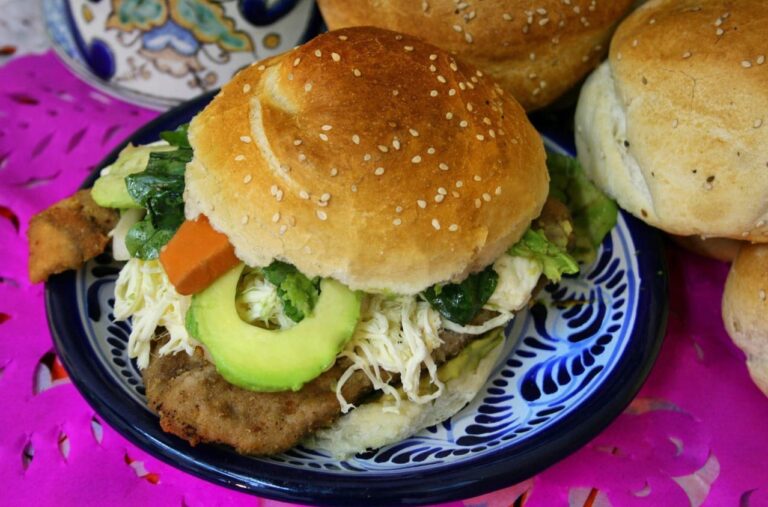The cemita poblana has its history; it is the sister of the sandwich, a close cousin of the bread roll, a distance relative of an emparedado (of English origin), and the giant tortas‘ historical precursor that are sold today in a large part of the Mexican Republic.
But the direct ancestry of the cemita is eminently Iberian and it is daughter of two varieties of bread that during the Colony were delivered in tribute to the Spanish Crown by the city of Puebla: a sponge biscuit, which was long and hard, and some bread or cookies very similar to the French bread roll, which later spread during the French military intervention against Mexico (1863- 1867). Both breads, specially made to be preserved and consumed during the long voyages to Spain and the Philippines, could last from four to eight months. They were made with different types of flour from Atlixco, since then the «Granero de Mexico», a municipality that, along with Puebla, San Martín Texmelucan, Cholula, and Izúcar de Matamoros, preserves the tradition of cemita.
The name of this typical poblano bread is related to the unleavened bread of Jewish origin (Semitic), cultivated in Spain by the Sephardic population (Jewish-Spanish) since the time of the Roman Empire. The city of Puebla provided Madrid with hundreds of tons of these bread pieces at least six times a year to supply its crews at sea in the Atlantic and Pacific oceans.
The cemita came into existence from a long process of fusion of the biscuit and the hollow cookie after the colonial period and appeared as a unique variety and with that name in the mid-nineteenth century to coincide with the consolidation of the Talavera pottery workshops, textile industry and glass craft production in the region of the Valley of Puebla.
At that time the cemitas were prepared at home and filled with potatoes, beans, and nopal, because beef, chicken, and pork were unaffordable to workers and artisans. The first public sale establishment appeared in the Victoria Market with a new recipe: bull’s foot in a vinaigrette with papalo, onion, and chilies in serrano or chipotle vinegar.
The new stuffed was a great commercial success and soon avocado was added to soften the hardness of the bread, as well as a splash of oil and salt. Later would come the stuffed with beef, chicken, cheese, quesillo, and carnitas, whose consumption is higher in Izucar de Matamoros, where they are called ¨semivolcano.
The decoration of the bread with drawings made with sesame seeds dates from the same period (1913); the artisans achieved great skills in tracing flowers, stars, animals, phrases, names, and landscapes on the cover.
For its relationship also with the chilanga or drowned torta (tapatía), both daughters of the Spanish torta – made with salt bread and butter – the cemita is part of the gastronomic identity of Puebla, which is gradually gaining market in the consumption of the middle and upper classes, which has allowed it to compete with the hamburger, sandwich, hot dog, pizza and all new varieties of fast food. There is currently a great variety of places specialized in the elaboration and sale of cemitas, and the Mercado del Carmen stands out as the most frequented by tourists and locals.
